Salinas, California, Hgh State Clinic, Hgh Injections, Hrt Doctors
Salinas, California Blood Testing Facilities
 Represents a LabCorp blood testing facility
Represents a LabCorp blood testing facility Represents a Quest Diagnostics blood testing facility
Represents a Quest Diagnostics blood testing facility

Nearby Labcorp Blood Testing facilities:
- Labcorp Center Distance: 0 m, 559 E. Alisal St. Ste 104, Salinas, Monterey County, CA, 93905
- Labcorp Center Distance: 2 m, 1326 Natividad Rd. Suite A, Salinas, Monterey County, CA, 93906
- Labcorp Center Distance: 11 m, 1173 Fremont Blvd Ste B, Seaside, Monterey County, CA, 93955
- Labcorp Center Distance: 14 m, 880 Cass St Ste 100, Monterey, Monterey County, CA, 93940
- Labcorp Center Distance: 16 m, 133 4Th Street, Gonzales, Monterey County, CA, 93926
- Labcorp Center Distance: 19 m, 272 Green Valley Road, Freedom, Santa Cruz County, CA, 95019
- Labcorp Center Distance: 23 m, 700 W. 6Th St. Ste E, Gilroy, Santa Clara County, CA, 95020
- Labcorp Center Distance: 28 m, 1505 Soquel Dr Ste 3, Santa Cruz, Santa Cruz County, CA, 95065
- Labcorp Center Distance: 39 m, 6489 Camden Ave Ste 107, San Jose, Santa Clara County, CA, 95120
- Labcorp Center Distance: 41 m, 393 Blossom Hill Rd Ste 350, San Jose, Santa Clara County, CA, 95123
- Labcorp Center Distance: 43 m, 2505 Samaritan Dr Ste 105, San Jose, Santa Clara County, CA, 95124
- Labcorp Center Distance: 44 m, 777 Knowles Dr Ste 4, Los Gatos, Santa Clara County, CA, 95032
- Labcorp Center Distance: 45 m, 2060 Aborn Rd Ste 200, San Jose, Santa Clara County, CA, 95121
- Labcorp Center Distance: 46 m, 50 E. Hamilton Ave. Suite 80, Campbell, Santa Clara County, CA, 95008
- Labcorp Center Distance: 47 m, 2100 Forest Ave Ste 111, San Jose, Santa Clara County, CA, 95128
- Labcorp Center Distance: 48 m, 316 Rosewood Ave. 2Nd Floor, San Jose, Santa Clara County, CA, 95117
- Labcorp Center Distance: 49 m, 266 N Jackson Ave Ste 4, San Jose, Santa Clara County, CA, 95116
- Labcorp Center Distance: 51 m, 222 I Street, Los Banos, Merced County, CA, 93635
- Labcorp Center Distance: 53 m, 901 W. El Camino Real, Sunnyvale, Santa Clara County, CA, 94087
- Labcorp Center Distance: 54 m, 500 E. Calaveras Blvd. Ste 124, Milpitas, Santa Clara County, CA, 95035
- Labcorp Center Distance: 60 m, 853 Middlefield Rd Ste 6, Palo Alto, Santa Clara County, CA, 94301
- Labcorp Center Distance: 63 m, 2147 Mowry Ave Ste C1, Fremont, Alameda County, CA, 94538
- Labcorp Center Distance: 64 m, 1048 El Camino Real Suite B, Redwood City, San Mateo County, CA, 94063
- Labcorp Center Distance: 69 m, 1018-A Murrieta Blvd., Livermore, Alameda County, CA, 94550
- Labcorp Center Distance: 70 m, 4125 Mohr Ave. Suite Am, Pleasanton, Alameda County, CA, 94566
- Labcorp Center Distance: 72 m, 5860 Owens Dr. Suite 120, Pleasanton, Alameda County, CA, 94588
- Labcorp Center Distance: 73 m, 1801 Colorado Ave. Suite 200, Turlock, Stanislaus County, CA, 95382
- Labcorp Center Distance: 75 m, 19942 Lake Chabot Rd, Castro Valley, Alameda County, CA, 94546
- Labcorp Center Distance: 77 m, 1541 Florida Ave. Suite 102, Modesto, Stanislaus County, CA, 95350
- Labcorp Center Distance: 78 m, 2305 Camino Ramon Ste 110, San Ramon, Contra Costa County, CA, 94583
- Labcorp Center Distance: 79 m, 424 E. Yosemite Ave. Suite E, Merced, Merced County, CA, 95340
- Labcorp Center Distance: 80 m, 907 San Ramon Valley Blvd 102, Danville, Contra Costa County, CA, 94526
- Labcorp Center Distance: 84 m, 1505 St. Alphonsus Way, Alamo, Contra Costa County, CA, 94507
- Labcorp Center Distance: 86 m, 2622 Ocean Ave., San Francisco, San Francisco County, CA, 94132
- Labcorp Center Distance: 87 m, 148 Noe Street, San Francisco, San Francisco County, CA, 94114
- Labcorp Center Distance: 88 m, 728 Pacific Ave. Suite 401, San Francisco, San Francisco County, CA, 94133
- Labcorp Center Distance: 89 m, 500 Lennon Lane, Walnut Creek, Contra Costa County, CA, 94598
- Labcorp Center Distance: 90 m, 2120 Golden Hill Rd. Suite 104, Paso Robles, San Luis Obispo County, CA, 93446
- Labcorp Center Distance: 91 m, 1617 N. California Street, Stockton, San Joaquin County, CA, 95204
- Labcorp Center Distance: 93 m, 350 Posada Ln. Suite 104, Templeton, San Luis Obispo County, CA, 93465
- Labcorp Center Distance: 96 m, 2089 Vale Rd Ste 14, San Pablo, Contra Costa County, CA, 94806
- Labcorp Center Distance: 98 m, 2160 Appian Way Ste 205, Pinole, Contra Costa County, CA, 94564
- Labcorp Center Distance: 99 m, 1367 East Second Street, Benicia, Solano County, CA, 94510
Nearby Quest Blood Testing facilities:
- Quest Center Distance: 0 m, 212 San Jose St, Salinas, Monterey County, CA, 93901-3928
- Quest Center Distance: 2 m, 631 E Alvin Dr, Salinas, Monterey County, CA, 93906-3056
- Quest Center Distance: 14 m, 757 Pacific St, Monterey, Monterey County, CA, 93940-2819
- Quest Center Distance: 19 m, 202 Green Valley Rd, Freedom, Santa Cruz County, CA, 95019-3135
- Quest Center Distance: 23 m, 7880 Wren Avenue, Gilroy, Santa Clara County, CA, 95020-7801
- Quest Center Distance: 25 m, 9360 No Name Uno, Gilroy, Santa Clara County, CA, 95020-3535
- Quest Center Distance: 28 m, 1595 Soquel Drive, Santa Cruz, Santa Cruz County, CA, 95065-1720
- Quest Center Distance: 31 m, 50 East Main Avenue, Morgan Hill, Santa Clara County, CA, 95037-3661
- Quest Center Distance: 43 m, 2581 Samaritan Drive, San Jose, Santa Clara County, CA, 95124-4112
- Quest Center Distance: 46 m, 2365 Quimby Rd, San Jose, Santa Clara County, CA, 95122-1337
- Quest Center Distance: 47 m, 123 Disalvo Ave, San Jose, Santa Clara County, CA, 95128-1717
- Quest Center Distance: 48 m, 2618 Alum Rock Ave, San Jose, Santa Clara County, CA, 95116-2621
- Quest Center Distance: 51 m, 730 W I St, Los Banos, Merced County, CA, 93635-3421
- Quest Center Distance: 52 m, 877 W Fremont Avenue, Sunnyvale, Santa Clara County, CA, 94087-2332
- Quest Center Distance: 53 m, 205 South Dr, Mountain View, Santa Clara County, CA, 94040-4323
- Quest Center Distance: 54 m, 649 E Calaveras Blvd, Milpitas, Santa Clara County, CA, 95035-7708
- Quest Center Distance: 61 m, 1045 Sperry Ave, Patterson, Stanislaus County, CA, 95363-9286
- Quest Center Distance: 64 m, 556 Mowry Avenue, Fremont, Alameda County, CA, 94536-4186
- Quest Center Distance: 66 m, 1100 Laurel Street, San Carlos, San Mateo County, CA, 94070-5000
- Quest Center Distance: 70 m, 1241 East Hillsdale Blvd, Foster City, San Mateo County, CA, 94404-0000
- Quest Center Distance: 72 m, 5720 Stoneridge Mall Road, Pleasanton, Alameda County, CA, 94588-2851
- Quest Center Distance: 73 m, 777 E Hawkeye Ave, Turlock, Stanislaus County, CA, 95380-7507
- Quest Center Distance: 74 m, 2531 E Whitmore Ave, Ceres, Stanislaus County, CA, 95307-2646
- Quest Center Distance: 75 m, 120 S El Camino Real, Millbrae, San Mateo County, CA, 94030-3133
- Quest Center Distance: 77 m, 1524 Mchenry Ave, Modesto, Stanislaus County, CA, 95350-4566
- Quest Center Distance: 79 m, 3377 G Street, Merced, Merced County, CA, 95340-0998
- Quest Center Distance: 81 m, 1165 Phelps Avenue, Coalinga, Fresno County, CA, 93210-9665
- Quest Center Distance: 82 m, 901 Campus Dr, Daly City, San Mateo County, CA, 94015-4930
- Quest Center Distance: 86 m, 3300 Webster St, Oakland, Alameda County, CA, 94609-3106
- Quest Center Distance: 87 m, 2198 15Th St, San Francisco, San Francisco County, CA, 94114-1213
- Quest Center Distance: 88 m, 2201 Post St, San Francisco, San Francisco County, CA, 94115-3427
- Quest Center Distance: 90 m, 363 East Almond Avenue, Madera, Madera County, CA, 93637-5698
- Quest Center Distance: 91 m, 510 E. Magnolia Street, Stockton, San Joaquin County, CA, 95202-1850
- Quest Center Distance: 92 m, 2800 N California St, Stockton, San Joaquin County, CA, 95204-3759
- Quest Center Distance: 93 m, 2425 East Street, Concord, Contra Costa County, CA, 94520-1925
- Quest Center Distance: 94 m, 1801 E March Ln, Stockton, San Joaquin County, CA, 95210-6660
- Quest Center Distance: 99 m, 3741 W Shaw Ave, Fresno, Fresno County, CA, 93711-3207
Salinas California Hormone Replacement Therapy Services
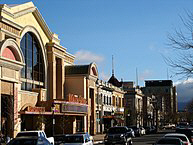
Aging may be an inevitable aspect of the human condition, but that doesn't mean that we shouldn't make every effort to live a long and healthy life. Our Board-Certified Hormone Clinic focuses on treatments and therapies that allow our patients to facilitate wellness and quality of life deep into their golden years. We work with patients of at least thirty years of age to provide HRT Solutions designed to help men and women look and feel younger while uplifting their vitality and quality of life.
If you're interested in Human Growth Hormone Therapy, Low-T Treatment, or Sermorelin Acetate, we can help you discover if you are a candidate for life-changing Hormone Optimization.
Finding an HRT Specialist in Salinas California
With our help, finding a doctor that specializes in Endocrinology and Hormone Replacement doesn't have to be a chore. Our clinic is staffed by highly trained HRT Specialists that can help you obtain the required Hormone Diagnostic Assessment without leaving the limits of Salinas. We have affiliates throughout the Salinas-Monterey area that work with us so that you can quickly get the prerequisite health screening necessary to qualify for an HRT Prescription for HGH, Testosterone, or any of the other Hormone Products that we offer.
Salinas Human Growth Hormone Injections for Somatopause
HGH Deficiency has a debilitating effect upon youthfulness and vitality. It encourages frailty, obesity, and joint pain while also having a suppressive impact on psychological wellness, memory, immune health, and exercise capacity. It even leads to dry skin, thinning hair, and deep wrinkles. With every passing year after thirty, the specter or Human Growth Hormone Deficiency becomes more apparent.
HGH Restoration is the only means by which to correct the adverse effects of Somatopause. Human Growth Hormone Shots have the ability to drastically improve wellbeing in the face of Human Growth Hormone Deficiency. Don't allow Somatopause to ruin your quality of life, ask our doctors about Prescription HGH Therapy!
Sermorelin Therapy in Salinas for HGH Deficiency
Recombinant Human Growth Hormone has improved the lives of tens of thousands of men and women across the state of California, but other treatment options have become available in the past decade that have proven equally effective, such as Sermorelin Acetate. Sermorelin is a Recombinant DNA Therapy which promotes natural HGH Secretion. With Sermorelin, your body is in full control of when and how much Human Growth Hormone to produce, a distinct advantage over HGH. If you're looking for a cost-effective means to treat your underlying Growth Hormone Deficiency, Sermorelin may be the best option available on the market!

Testosterone Therapy Prescriptions in Salinas California
For men, there is little in life that is more demoralizing than Sexual Insufficiency. The leading cause of Erectile Dysfunction and Libido in America today is Testosterone Deficiency. Our clinic offers a number of Low-T Treatment options such as Transdermal Patches, Testosterone Creams, and Testosterone Cypionate Injections, all designed to adequately supply the male body with all of the Testosterone needed to sustain virility, masculinity, and good health.
There's no reason to sit in quiet shame because of your inability to perform. There's no need to be ashamed of an easily treatable condition that impacts the lives of hundreds of men just like you in Salinas. We provide confidential consultation and can help you overcome your Low-T and experience improved mood, enhanced muscle mass, and restored sexual function!
Salinas Comprehensive HRT Therapy for Total Hormone Revitalization
The human body is a complex organism that relies on an ideal balance of hormones to perform its natural functions at ideal capacity. While it's true that HGH Therapy or Testosterone Replacement can provide immense benefits for the patient, they might not be able to completely right the ship. For many patients, multiple hormones need to be “topped off” to restore optimal Hormone Balance. With our Comprehensive Hormone Panel, we gather a huge amount of medical information to ensure that we have a complete picture of your health and your hormone needs!
Salinas California Information and History
The city of Salinas is a minor population center that is located between San Jose and Los Angeles, just a short drive inland from Monterey. Salinas is relatively close to the Bay Area but is just outside of its southern limits. Salinas is one of the older cities in the state of California, founded in 1874. The most famous historical resident of Salinas was arguably John Steinbeck, the author of the Grapes of Wrath and other important 20th century novels.
Neighborhoods in Salinas include Monterey Park, Monte Bella, Williams Ranch, Creekbridge, Laurel Wood, Downtown, Maple Park, Hebbron Heights, Vista Park, and Harden Ranch. Natividad, Spreckles, Old Hilltown, Blanco, and Boronda are nearby suburbs of Salinas. As you can imagine, one of the most popular tourist destinations in Salinas is the National Steinbeck Center, a museum dedicated to the life and works of the city's great author.
For lovers of the outdoors, the Salinas River National Wildlife Refuge, the Fort Ord National Monument and Toro County Park are all attractive destinations. Like much of coastal California, Salinas has also proven to be an excellent place for the cultivation of grapes which are perfect for wine, and a number of wineries operate within Salinas, including Scheid Vineyards, Odonata Wines South, Marylin Remark Winery, and the Passagno Winery.
All About Salinas, California Geographic Area
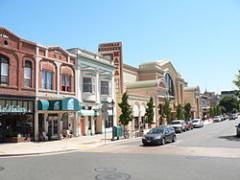
Salinas is the county seat and largest municipality of Monterey County, California. Salinas is located 10 miles (16 km) east-southeast of the mouth of the Salinas River, at an elevation of about 52 feet (16 m) above sea level. The population was 150,441 at the 2010 census. The mostly suburban city is located at the mouth of the Salinas Valley roughly eight miles from the Pacific Ocean and has a mild climate. The city consists mostly of late 20th century single family homes, some low-level apartments, ranging from modest bungalows to spacious luxury homes. The climate is ideal for the floral industry and grape vineyards planted by world-famous vintners. Salinas is an agricultural center and the hometown of writer and Nobel Prize in Literature laureate John Steinbeck, who based several of his novels there, including Of Mice and Men.
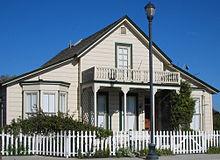
The land currently occupied by the City of Salinas is thought to have been settled by native Americans known as the Esselen prior to 200 AD. Between 200 and 500 AD, they were displaced by the Rumsen group of Ohlone speaking people, who were the inhabitants at contact with the Spanish. Large Spanish land grants for the Catholic Missions and as bonuses to soldiers gave way to Mexican land grants for smaller ranchos where mostly cattle were grazed, and a thriving trade in cattle hide came through the Port of Monterey.
California officially became part of the United States of America in 1850, following several years of battles in the Salinas area with John Fremont flying the American flag on the highest peak of the Gabilan Mountains and claiming California for the United States. Before this time Monterey was the capital of California and had been under military rule after the signing of the Treaty of Guadalupe-Hidalgo at the end of the Mexican-American war.
The Salinas post office opened in 1854. A traveler's inn called the Halfway House at the intersection of two stage coach routes was built in 1856 and a settlement grew up there. The streets of Salinas were laid out in 1867, and the town was incorporated in 1874. The city was named after the word for a "salt marsh" in Spanish, salinas.
The conversion of grazing land to crops and the coming of the rail road in 1868 to transport goods and people was a major turning point in the history and economic advancement of Salinas. Dry farming of wheat, barley, and other grains as well as potatoes and mustard seed was common in the 1800s. Chinese labor drained thousands of acres of swampland to become productive farmland, and as much early farm labor was done by Chinese immigrants, Salinas boasted the second largest Chinatown in the state, slightly smaller than San Francisco. Irrigation changed farming in Salinas to mainly row crops of root vegetables and sugar beets. A wide variety of fruits and vegetables are now grown including wine grapes supporting the burgeoning wine industry in the Salinas Valley.
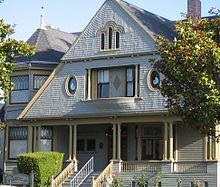
The economy of Salinas is largely based on agriculture. Located in one of California's richest farming regions, the area produces a variety of fruits and vegetables, including lettuce, many major vegetable producers are headquartered in Salinas. The historic prevalence of row crops is documented by aerial photographic interpretation of Earth Metrics, Aerial photographic interpretation which study also indicated a major conversion of cropland to urban uses over the time period 1956 to 1968, with that trend continuing for the next decades as well. Salinas also annexed the nearby communities of Alisal and Santa Rita during this time.
Salinas was also the birthplace of writer and Nobel Prize laureate John Steinbeck. The historic downtown (so called Old Town Salinas), featuring much fine Victorian architecture, is home to the National Steinbeck Center, the Steinbeck House and the John Steinbeck Library.
Major development took place in the 1990s, with the construction of Creekbridge, Williams Ranch, and Harden Ranch.
According to the United States Census Bureau, the city has a total area of 23.2 square miles (60 km2), 99.84% of it land and 0.16% of it water.
The city rests about 18 meters (59 ft) above sea level, and it is located roughly eight miles from the Pacific Ocean. The Gabilan and Santa Lucia mountain ranges border the Salinas Valley to the east and to the west, respectively. Both mountain ranges and the Salinas Valley run approximately 90 miles (145 km) south-east from Salinas towards King City.
The Salinas River runs the length of the Salinas Valley and empties into the Pacific Ocean at the center of the Monterey Bay. During the summer months the river flows partially underground and it is this extensive underground aquifer that allows for irrigation of cropland in an area without much annual rainfall.
The 2010 United States Census reported that Salinas had a population of 150,441. The population density was 6,479.8 people per square mile (2,501.9/km ²). The racial makeup of Salinas was 68,973 (45.8%) White, down from 90.3% in 1970, 2,993 (2.0%) African American, 1,888 (1.3%) Native American, 9,438 (6.3%) Asian, 478 (0.3%) Pacific Islander, 59,041 (39.2%) from other races, and 7,630 (5.1%) from two or more races. Hispanic or Latino of any race were 112,799 persons (75.0%).
The Census reported that 147,976 people (98.4% of the population) lived in households, 658 (0.4%) lived in non-institutionalized group quarters, and 1,807 (1.2%) were institutionalized.
There were 40,387 households, out of which 21,435 (53.1%) had children under the age of 18 living in them, 21,380 (52.9%) were opposite-sex married couples living together, 6,835 (16.9%) had a female householder with no husband present, 3,300 (8.2%) had a male householder with no wife present. There were 3,271 (8.1%) unmarried opposite-sex partnerships, and 271 (0.7%) same-sex married couples or partnerships. 6,895 households (17.1%) were made up of individuals and 2,587 (6.4%) had someone living alone who was 65 years of age or older. The average household size was 3.66. There were 31,515 families (78.0% of all households); the average family size was 4.05.
The population was spread out with 47,180 people (31.4%) under the age of 18, 18,049 people (12.0%) aged 18 to 24, 44,978 people (29.9%) aged 25 to 44, 28,976 people (19.3%) aged 45 to 64, and 11,258 people (7.5%) who were 65 years of age or older. The median age was 28.8 years. For every 100 females there were 102.1 males. For every 100 females age 18 and over, there were 100.8 males.
There were 42,651 housing units at an average density of 1,837.1 per square mile (709.3/km ²), of which 18,198 (45.1%) were owner-occupied, and 22,189 (54.9%) were occupied by renters. The homeowner vacancy rate was 2.5%; the rental vacancy rate was 4.6%. 65,108 people (43.3% of the population) lived in owner-occupied housing units and 82,868 people (55.1%) lived in rental housing units.
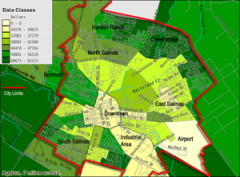
The 2000 United States Census reported that Salinas had a population of 151,060. The population density was 7,948.4 per square mile (3,068.1/km ²). There were 39,659 housing units at an average density of 2,086.8 per square mile (805.5/km ²). The racial makeup of the city was 65.2% Hispanic or Latino of any race, 49.1% White, 6.2% Asian American, 17.8% African American, 1.3% Native American, 38.7% from other races, and 5.1% from two or more races. 49.2% have children under the age of 18 living with them, 57.6% were married couples living together, 14.8% had a female householder with no husband present, and 21.6% were non-families. 17.1% of all households were made up of individuals and 6.5% had someone living alone who was 65 years of age or older. The average household size was 3.69 and the average family size was 4.08
Age distribution was 33.0% under the age of 19 or younger, 11.8% from 18 to 24, 33.7% from 25 to 44, 15.5% from 45 to 64, and 7.1% who were 65 years of age or older. The median age was 28 years. For every 100 females there were 117.7 males. For every 102 females age 18 and over, there were 117.4 males.
The median household income was $43,728, and the median family income was $44,669. Males had a median income of $35,641 versus $27,013 for females. The per capita income for the city was $14,495. About 12.8% of families and 16.7% of the population were below the poverty line, including 20.1% of those under age 18 and 9.4% of those age 65 or over.
Median household income in the city tended to be significantly higher alongside the city limits, especially in the northern Harden Ranch and Creekbridge neighborhoods. East Salinas and the downtown area suffered from a very low median household income as well as high crime rates. South and North Salinas featured roughly the same level of median households income with the latter being home to city's wealthiest newly constructed neighborhoods.
Salinas is known as the Salad Bowl of the World. Over 80% of the world's lettuce is grown in the Salinas Valley. The city's labor force is 54.6% blue collar and 45.4% white collar. According to the 2000 United States Census, 24% of the population worked in sales and office occupations, 21.4% worked in management, professional, and related occupations, 16.2% worked in service occupations, 14.9% worked in farming, fishing, and forestry occupations, 14.4% worked in production, transportation, and material moving occupations, and 9.1% worked in construction, extraction, and maintenance occupations. Many believe these numbers are skewed as they do not include a significant portion of farm workers and blue collar workers who are migratory and undocumented, and are present for approximately 9 months of the year.
Large employers include Fresh Express, Capital One and local agricultural companies such as Taylor Farms, Tanimura & Antle, and D aoArrigo Bros.
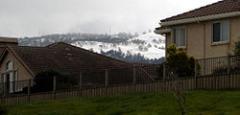
Salinas has cool and moderate temperatures, due to the "natural air conditioner" that conveys ocean air and fog from the Monterey Bay to Salinas, while towns to the north and south of Salinas experience hotter summers, as mountains block the ocean air. Thus, Salinas weather is closer to that of the Central Coast of California, rather than that of inland valleys, and thus enjoys a mild Mediterranean climate with typical daily highs ranging from around 63 °F (17 °C) in the winter to around 75 °F (24 °C) in the summer. According to the Weather channel, monthly average temperature highs range from 63 to 75 F.
Salinas is in the top ten American Cities for cleanest air quality. The offshore marine layer generates winds that blow smog further inland).
The difference between ocean and air temperature also tends to create heavy morning fog during the summer months, known as the marine layer, driven by an onshore wind created by the local high pressure sunny portions of the Salinas Valley, which extend north and south from Salinas and the Bay.
The average annual rainfall for the city is approximately 14.4 inches (370 mm). Occasionally, there is snowfall on the peaks of the Gabilan and Santa Lucia mountain ranges, but snow in the city itself is extremely rare, occurring about once every 10 to 20 years on average. The last time snow fell in Salinas was on February 26, 2011.
Salinas boasts an emerging arts scene led by the First Fridays Art Walk and the innovative use of non-traditional or business venues to exhibit art and host live local music. The oldest gallery in Salinas, the Valley Art Gallery, has been active for over 30 years. The Hartnell College Gallery hosts world-class exhibitions of art during the school year. The National Steinbeck Center has two galleries with changing exhibits, and the city's newest @Risk Gallery features cutting-edge and visionary exhibitions. The Art Walk, held in the downtown area, features 50 venues.
Live theater companies in Salinas include ARIEL Theatrical located in the Karen Wilson's Children's Theater in Oldtown Salinas, and The Western Stage, based at Hartnell College.
Live local music is available at many restaurants in the downtown area, and during the First Fridays Art Walk. Concerts are held at the historic Fox California Theater, Steinbeck Institute for Arts and Culture and the Salinas Sports Complex, as well as at Hartnell Community College.
Salinas is home to many public murals, including work by John Cerney which can be viewed in the agricultural fields surrounding the city. Claes Oldenburg placed his sculpture, Hat in Three Stages of Landing, in Sherwood Park at the center of the city.
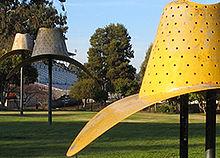
U.S. Route 101 is the major north-south highway in Salinas, linking the city to the rest of the Central Coast region, San Francisco to the north, and Los Angeles to the south. California State Route 68 heads west to Monterey, while California State Route 183 runs northwest to Castroville.
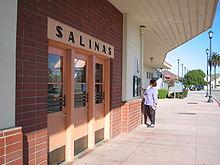
Amtrak, the national passenger rail system, serves Salinas, operating its Coast Starlight daily in each direction between Seattle, Washington, and Los Angeles.
Public transportation via bus is provided by Monterey-Salinas Transit. Public buses take passengers throughout the county, as well as San Jose and Gilroy. Buses to San Jose and Gilroy connect to Caltrain and Amtrak in those cities.
Salinas Municipal Airport is located on the southeastern boundary of the City of Salinas, three miles (5 km) from the city center. It is a general aviation facility occupying 763 acres (3.1 km2), with three runways serving single and twin engine aircraft and helicopters, as well as an increasing number of turbopropeller and turbine-powered business jets.
The airport has an air traffic control tower in operation twelve hours a day, seven days a week. The airport terminal is located on Mortensen Avenue and houses airport office staff as well as professional offices. The city is currently[when?] accepting proposals for leasing and operation of the restaurant located within the Terminal. Salinas Airport Commissioners agreed to a proposed project that would bring a 100-room hotel, offices and hangars to a vacant lot in front of the Salinas Municipal Airport terminal. The Salinas Jet Center would include a national chain hotel, 80,000 square feet (7,000 m2) of office space, four large complexes combining more offices with airplane hangars and a 24-hour, full-service aircraft fueling station. The project would also include a taxiway to allow planes to access the new hangars.
The airport has full Instrument Landing System (ILS) and VHF omnidirectional range (VOR) located on the airport. The ILS has a Medium Intensity Approach Lighting System, with Runway Alignment Indicator Lights. The VOR approach has Runway End Identifier Lights. All but the ILS runway, RWY 31, have Visual Approach Slope Indicators (VASIs).
The airport is the site of the California International Airshow, set annually in the late summer or early autumn. The event draws thousands of visitors to Salinas over its three-day run.
Salinas has seven school districts serving the city core and adjacent unincorporated areas. The largest school district in Salinas is the Salinas Union High School District (grades 7-12) with 13,578 students enrolled in 10 campuses. The Salinas City Elementary School District is the largest elementary school district in Salinas, with 13 schools and 7,954 students. Other districts include Santa Rita Union Elementary School District, Graves Elementary School District, Washington Union School District, Lagunita School District, and Alisal Union School District.
Opportunities for higher education in Salinas include Hartnell Community College and Heald College.
Salinas and is surrounding towns are served by Salinas Valley Memorial Hospital and Natividad Medical Center, both located in Salinas. Natividad is one of the University of California, San Francisco's teaching hospitals and is owned and operated by Monterey County.
As of 2012, the Natividad Medical Center was training medical interpreters bilingual in one of the Oaxacan languages (including Triqui, Mixteco, or Zapotec) as well as in Spanish.
Just outside the official city limits, the restored adobe dwelling constructed in 1844 by Jose Eusebio Boronda, rests on one of the original Mexican land grants. The Boronda Adobe is a California Historical Landmark and listed in the National Register of Historic Places and holds a museum of early Salinas and California history. Other historic buildings are located here, including the Lagunita School house John Steinbeck wrote about in the Red Pony. The site also holds the official archive of Monterey County, open to researchers by appointment.
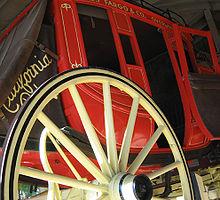
As host of a PRCA-sanctioned rodeo, Salinas is a major stop on the professional rodeo circuit. The California Rodeo Salinas began in 1911 as a Wild West Show on the site of the old race track ground, now the Salinas Sports Complex. Every third week of July is Big Week, when cowboys and fans come for the traditional rodeo competitions, including bull riding. Rodeo-related events held in Salinas and Monterey include cowboy poetry, wine tasting, a carnival, barbecues and a gala cowboy ball.
The largest wine-grape producing region in California, the Salinas Valley, is home to over 20 wineries and 14 estate tasting rooms along the scenic and historic River Road just south of the city limits. Hahn Estates, Paraiso, Scheid, Talbot, Wrath and Ventana along with smaller boutique wineries of Marilyn Remark, Manzoni, Pessagno, Bookenoogan, Puma Road, Sycamore Cellars, and Hammond are just a few of the vinters growing in the region. Tasting rooms are open weekdays, weekends and by appointment check with the River Road Wine Trail before going.




Local newspapers include The Salinas Californian, Monterey County Weekly and Monterey County Herald. Television service for the community comes from the Monterey-Salinas-Santa Cruz designated market area (DMA).
Local radio stations include:
KION Channel 46 also provides news for the area as a CBS affiliate.
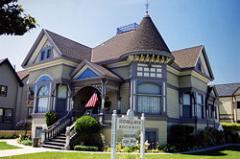
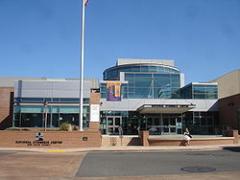
Word Count: 3600






